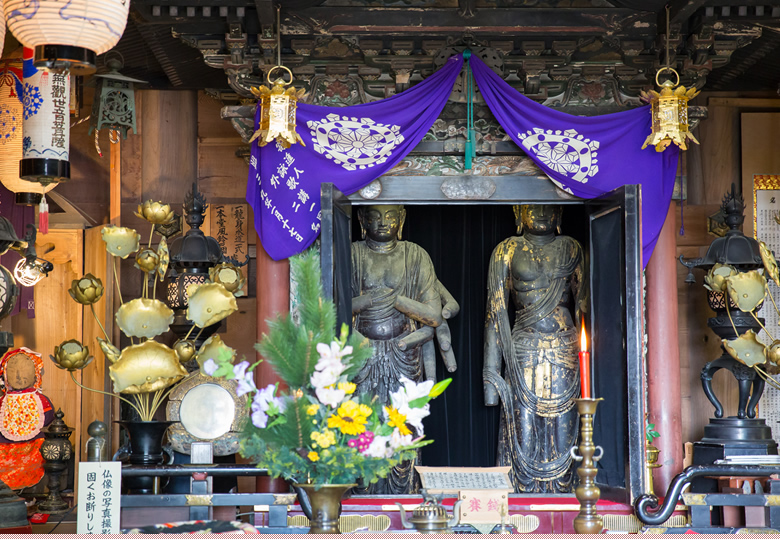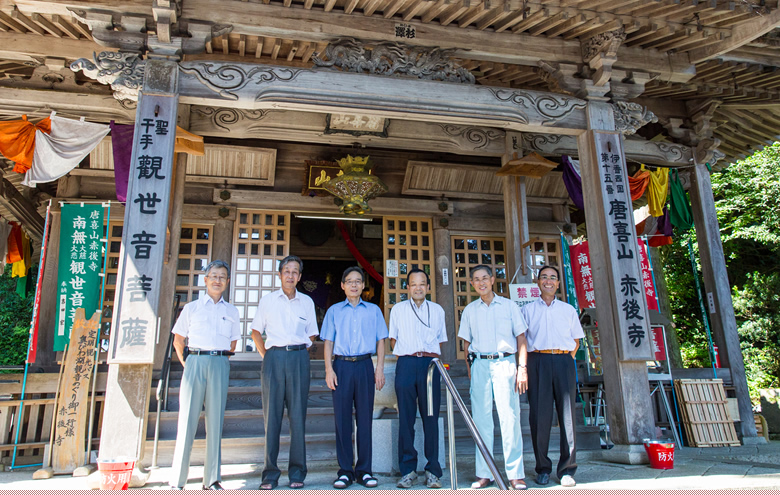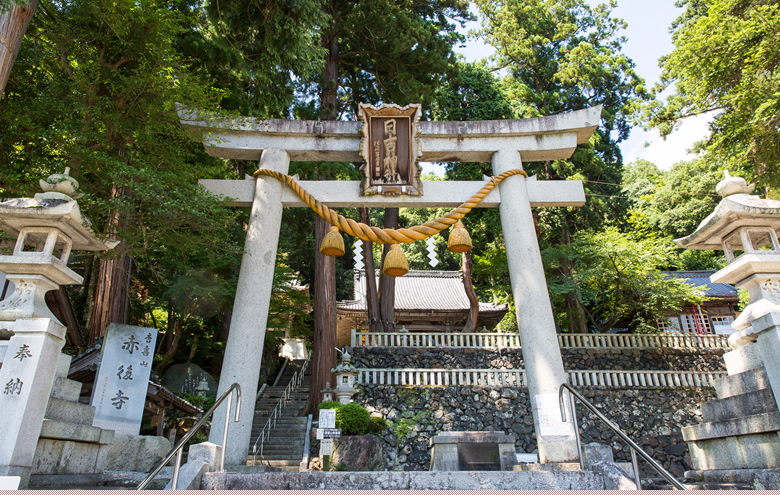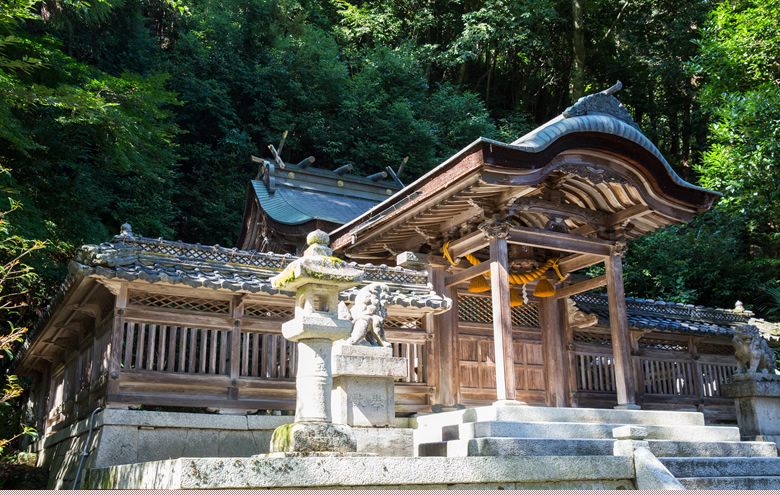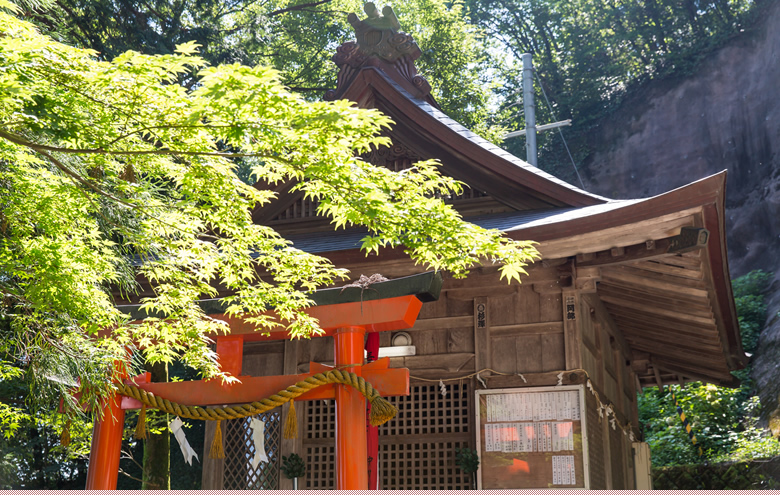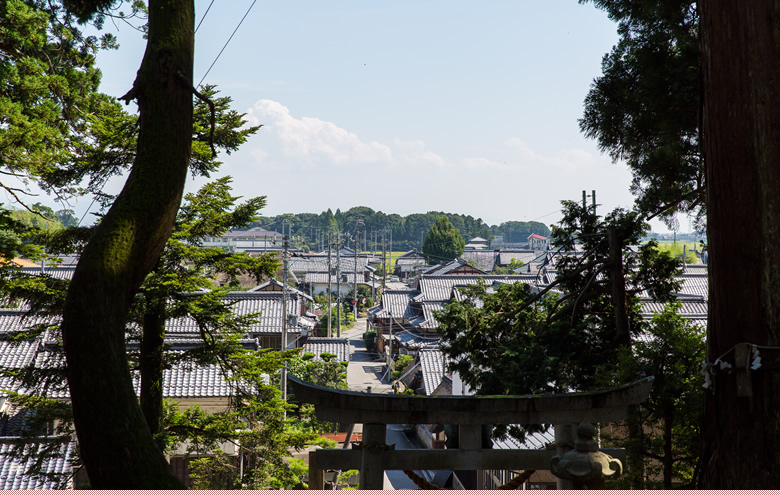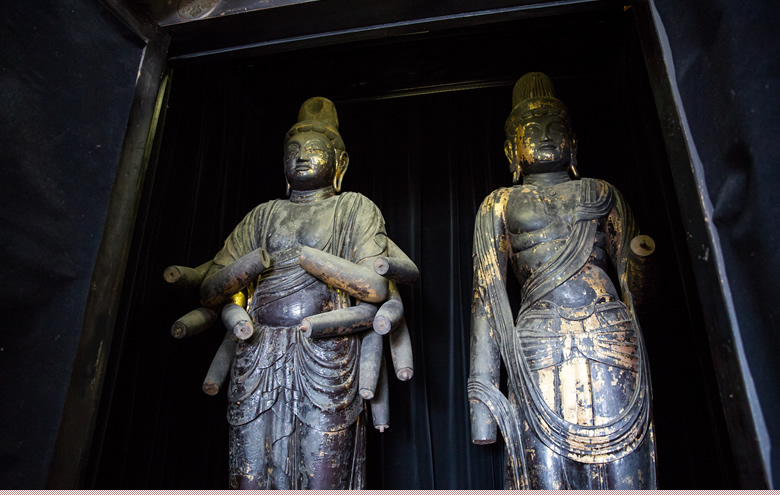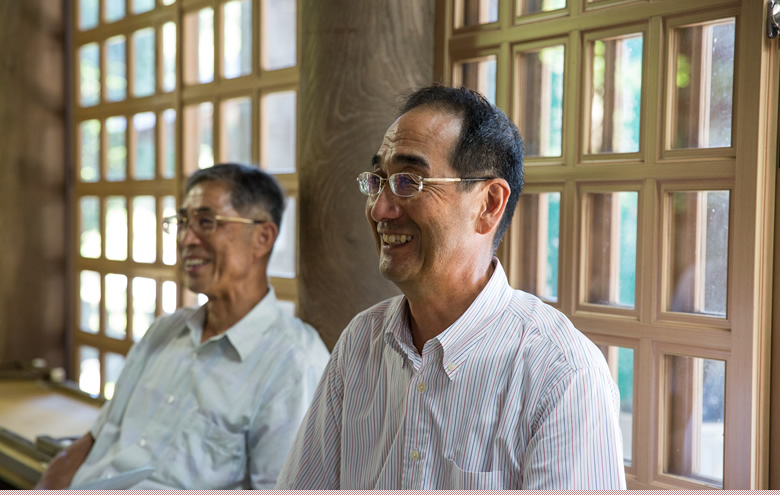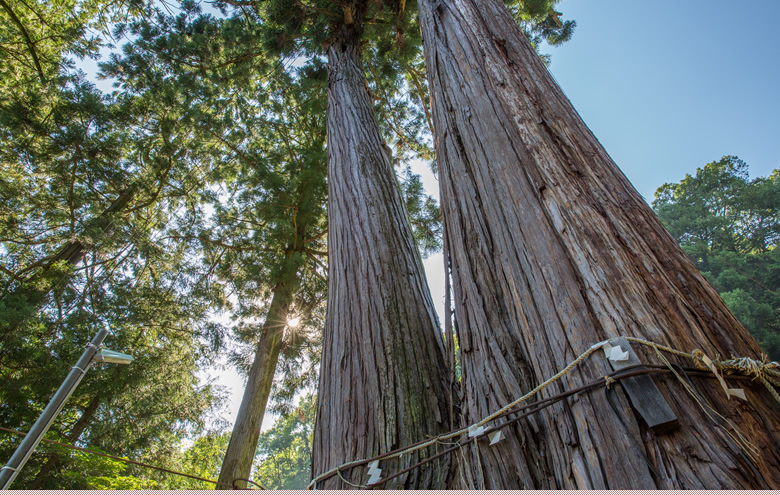The following interviews were held in August and September 2017
The image of Kannon with lost arms, lost hands, and even lacking the eleven faces on its head is a pitiful sight. Located in this area of Kohoku that has been a battle ground several times over the course of history, even though the Kannon-do building of Shakugo-ji Temple was lost in fire, the image of Kannon was carried out to safety by the people in the village, and has been maintained since then to the present. We visited Karakawa district in Takatsuki-town, where the entire community helps to take care of the image of Kannon which their ancestors desperately tried to protect. We gathered together the six people who comprised the sewakata in fiscal 2017 and spoke to them.
From left, Mr.Fuse, Mr.Nakagawa, Mr.Yamada, Mr.Tsuda, Mr.Miyazaki, Mr.Amamori

Visits here require advance reservation, right?
Mr.Fuse: Yes. Make an appointment in advance by phone and the person whose turn it is for that day will assist you. There are six people in total that serve for a period of two years, and the person in charge changes each day. Every year we choose three new members by election at the neighborhood council, and the second year members convey the details of the duties involved to the first year members.
The fact that Shakugo-ji Temple, Hiyoshi Jinja Shrine, and Inari Jinja Shrine are all on the same
premises indicates the still-remaining style of syncretism between Shinto and Buddhism

Please tell us about the details of your duties.
Mr.Fuse: The person in charge for that day opens the doors in the morning, does the cleaning and otsutome (reading of scriptures before a statue of Buddha), prepares to welcome the visitors, then later does otsutome and closes up the doors in the evening. Finally, they bring the mobile phone used for responding to reservations to the house of the person whose turn it is the next day.
In addition, we do preparation for and overseeing operation on the day of the Buddhist memorial services held once a month and the Sennichie Buddhist memorial service every year on July 10th. We get a lot of visitors from other prefectures for the Sennichie, so the whole town is involved in major cleaning and we help with preparations and management.
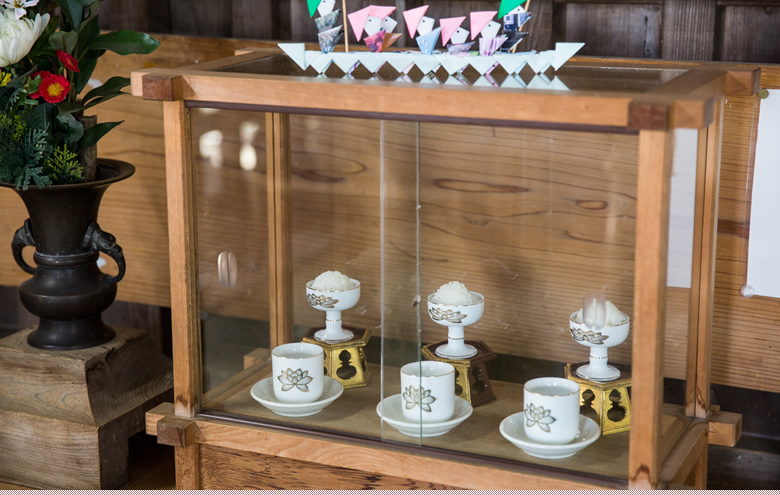
Mr.Tsuda: Apart from us, there are people in the village who take turns to come offer obukusan (rice-for-the-deceased) and water every day. In addition to the temple, we also offer washed rice, salt, and water for the Hiyoshi Jinja, and Inari Jinja Shrines that are on the premises, and then remove them in the evening. This is also listed in the yearly duties for the person in charge.

So it is being protected by the community overall.
Mr.Tsuda: We’re non-sectarian without a resident priest, and the ujigami of the Karakawa area covers (a guardian god or spirit of a particular place in the Shinto religion) the temples and shrines. I think faith is rooted in the daily lives of the villagers even now. There are several people who come to worship every day at 5 or 6 in the morning.

About how many visitors come over the course of a year?
Mr.Fuse: About 4,000 people including the Sennichie and the festival. One characteristic is that 30% of individual guests are from Kanto region. Since we held an exhibition in Tokyo in 2014 (Kannon No Sato No Inori To Kurashi Ten), there has been an increase in visitors who say they wanted to see the actual place.
Left Standing image of a Senju Kannon (thousand-armed Kannon)
(9th century/National designated Important Cultural Asset)
Right Standing image of the Sho Kannon (holy Kannon)
(10th century/National designated Important Cultural Asset)

It must be completely different to see these images in a museum versus seeing them in a temple.
Mr.Fuse: People comment to the effect that it is attractive to see it integrated in this environment. Maybe you could say it’s the smell of the temple, but perhaps the appeal of this area is that it hasn’t become a touristic area.
Mr.Miyazaki: People are surprised when we say that everyone takes turns protecting it.

That’s right, I was impressed at how well this works.
Mr.Miyazaki: We think it’s totally natural, so when people ask us about it we almost don’t know how to explain it to them.
Mr.Amamori: People are surprised when we say that it is natural to us. Yet it is not that we are protecting the deity Kannon, but rather that we have the privilege of protecting her and we are being protected by her. Since we feel that she is watching over us, we don’t feel like it’s a hardship.

Do you also explain about the temple to those that are visiting?
Mr.Tsuda: One time, one of our elder members prepared an article based on old books and legends in the village from long ago. They said that it wouldn’t do to have guidance that wasn’t uniform. I have taken that information and used it so that I can explain things better.
Mr.Fuse: This is the first year that I’ve become one of the sewakata, and I learned a lot in detail about Kannon. Before then I thought it was just a Buddhist image before which I had to put my hands together.
Mr.Miyazaki: The visitors that come here know more about Kannon than we do.
It is enshrined in a zushi (miniature shrine) from the Azuchi-Momoyama period(16th-17th century).
It’s the same style as Nikko Tosho-gu Shrine’s Yomeimon.
Mr.Fuse: There are not many people who go on a jaunt, but there are some that come every month.
Mr.Tsuda: They’ll make it completely dark, stand some sticks of incense, and continue to worship for 20-30 minutes, and then leave. Since it’s non-sectarian, we think it’s fine if people visit the temple however they wish.
People tell us that they really felt peace in their heart. We really appreciate hearing them say ‘thank you very much’ before they leave.
Mr.Amamori: I’m sometimes asked “Aren’t you going to restore it?” but Kannon in her current state is the best. We want you to meet this Kannon in this place.





